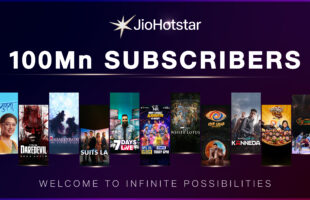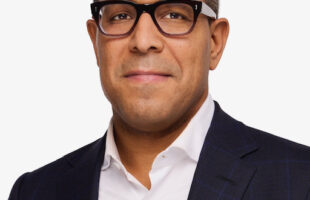4K “Ultra HD”
4K, also known as Ultra HD, is the digital video format now approved by the International Telecommunication Union (ITU). At a resolution of 3840 × 2160 pixels, the format is four times higher than regular high definition and is the successor to today’s 1080p Full HD format. Below are highlights supporting a surge in the 4K discussion.
1. At the recent 2013 International CES (Consumer Electronics Show) in Las Vegas, 4K TV sets dominated, with virtually every major manufacturer (notably LG, Samsung, Sony and Toshiba) displaying their own version of the technology. CES attendees and reviewers gave the thumbs up to the TV sets in terms of clarity of image (or course) but are questioning where the 4K content will come from.
2. Also at CES, Qualcomm, a leading maker of chips for cellphones (based in San Diego) announced that the company’s new mobile processor, Snapdragon 800, is capable of encoding and decoding 4K UHD video content, and 7.1 surround sound audio, and is confident that mobile devices that capture 4K “Ultra HD” will be seen as early as this year.
3. The upcoming content market MIPTV will for the first time create several conferences dedicated to 4K/Ultra HDTV, departing from its previous focus on 3D technology and content. MIPTV says, “The change in focus is in anticipation of the technological changes ahead, and to raise awareness among content producers and channels why it makes sound commercial sense to prepare today for these exciting developments…some major broadcasters are already making active plans to convert at least some of their channel capacity to Ultra HDTV/4K transmission, and even 8K broadcasts.”
4. Brazil will soon be the centre for two major live sports events; the 2014 FIFA World Cup and the 2016 Olympics. Globo TV is looking at the high-definition technology with a great deal of interest. The Brazilian broadcaster is currently exploring ways to televise “live” events in either 4K or 8K although no official announcements have been made. One thing is for sure, Globo TV’s 8K trials are already on the way in Brazil this year, starting with the 2013 Rio Carnival in February, with who else, but the NHK.
Stereoscopic 3D
UK-based production company Atlantic Productions has a 20-year history in factual production but in recent years has been carving a name for itself in Natural History 3D films, notably Flying Monsters, The Bachelor King, Kingdom of Plants and Galapagos, all with Sir David Attenborough, and airing both on television (on the UK’s Sky 3D) as well as theatrically around the world on IMAX screens.
Below is a TV ASIA Plus exclusive with John Morris, Commercial Director, Atlantic Productions, on location in London. A full transcript of TV ASIA Plus’ London interview with John Morris is available on www.onscreenasia.com.
Q: How has the experience been when promoting 3D content to broadcasters?
A: I think 3D is a medium to long-term gain. I think there was a lot of excitement after Avatar. What happened was that Hollywood jumped in with a lot of “3D” products which was originally shot in 2D and then they reformat it in 3D. Audiences pay 20% – 50% extra to see 3D and all you get is an upgraded 2D film which has a few effects and “gee-whiz” moments – you get pretty tired with that after a while. If 3D effect is something that doesn’t intrinsically add to the story – you know you’re being conned. After Avatar, half of the films that came out probably didn’t require 3D and there was a backlash from audiences and that impact was felt in Hollywood. Hollywood is still making 3D films but I think they’re more cautious about it.
I think the same thing happened in TV – if there is not enough good product, then it’s very difficult to launch a full 3D TV channel because who is going to watch ONE good show every week? Sky has been very clever because they bet that 3D will ultimately become something that is generally available, if you want to pay for it. What they’ve got is a big enough customer base and they make the 3D offering within the various different packages they’ve got so it’s just one of many extra value their customers can get. And they’ve invested enough in quality 3D shows every day. Their quality bar is high and that’s because they’ve invested. It takes commitment though.
Given the cost of making 3D, the creative and technical knowledge that’s needed, that limits the number of 3D channels in the world and many of them do not have big budgets. So if we were relying only on TV and whatever we could make downstream with home entertainment, it wouldn’t be a financially viable thing, at the moment. We’re exploiting other media, and the giant screen in particular is of great interest. What that does imply, is you’ve got to manage windows which are more complex than if you’re just a TV producer/ distributor.
Q: What do buyers ask of when it comes to 3D content?
A: 3D channels are obviously very interested. 2D buyers I think initially got caught up with “this is a 3D programme so it’s not for us” without knowing that we’ve always planned them not just for 3D broadcast, but for 2D as well. The only challenge is that buyers want the programmes before we’re able to release them because of the windows for the giant screens and theatrics. On the other hand, the good thing is that once the property is available, the buyers will be in a nice situation where this has been previously released as a theatrical film – which always brings a bit more awareness, just like a Hollywood film does – there is a value for them to wait.
Q: Is there STILL a future for 3D?
A: We think so. What we think is that it has a real future for a mass audience in TV, tablets, so long as it is glassesfree. I think the technology will catch up. There are TVs demonstrated now in technology shows without glasses, and they work. They have to work on getting the “angle” of view right though, but they have done it. I think the price point is also important. If you look at the rate of take up here in the UK; the number of people who’ve got 3D sets vs. HD sets – 3D is growing faster. What we’ve found out is that once people have a 3D-capable set, they look for product because they enjoy that experience very much. We actually see blu-ray being a high proportion of our 3D home entertainment sales because blu-ray is the carrier of 3D so that indicates people with 3D sets are hungry for products.
8K “Super Hi-Vision”
As Ultra HD (4K) is starting to draw attention in the media landscape, NHK is looking ahead in rolling out its 8K “Super Hi-Vision”, which will enable four times the resolution of 4K and 16 times that of current HD. As a stepping stone to fully implement 8K, whose R&D started in 1995, 4K is very important in terms of increasing production expertise in ultra high resolution and also growing the public interest. Below is a TV ASIA Plus exclusive with Junko Ogawa (Ms), Head, Global Content Marketing, NHK.
Q: Which genre of factual programming is NHK exploring to shoot and transmit in 4K/8K?
A: We are now exploring production in various genres to understand what could be most suitable for fully experiencing 8K. From our experience in implementing the current HD, big sports events such as the Olympics, and theatrical pieces or art programs will be good subjects to shoot. As some recent examples of what we are doing with 8K, NHK is joining hands with Brazilian commercial broadcaster TV Globo in February 2013 to shoot the Rio de Janeiro Carnival in 8K. NHK is also shooting a short movie in 8K which is to be premiered at the Cannes Film Festival in May.
Q: How will programme distribution market 4K/ 8K content? Are buyers keen on such content?
A: It is a little early for broadcasting 8K, and for the moment, it seems theatrical use is the best way to appreciate the 8K experience.
Q: Delivering of 4K/ 8K content is contingent upon a readiness from both transmission and reception ends. How “ready” is NHK?
A: Together with our global partners, NHK has succeeded in doing several 8K transmissions using optical fiber, satellite, and IP networks, and last year in May, we succeeded in transmitting 8K through terrestrial waves. With regard to the road map toward the 8K broadcast in Japan, the government-led discussion is still underway. We are now gearing up for their announcement, and aiming to be ready for 8K experimental broadcast in 2016, the year of Rio de Janeiro Olympics.
Q: Why the Rio Carnival as a subject for 8K shoot?
A: The filming was not a live coverage but we are going to produce a feature documentary. Content like this is a great way for people to experience the scope of what 8K can offer, and so it will definitely be used for promoting the technology at public screenings etc, among others. The beauty of 8K is the ultra high-definition video and 3D audio which will really make you feel as if you are really there – at the heart of the action. From our experience when trying to promote conventional HDTV, we found that with events like the carnival, people are really able to feel as if they were there.
Q: What has NHK learned from London 2012 that would help in preparation for Rio 2016?
A: We’ve learned from the experience of London 2012 that there is an amazing interest and expectation toward 8K, and have received feedback that people want to see more, and that they want to see it on broadcast. We hope
the R&D of the 8K technology will be able to satisfy the
growing interest by the time of Rio 2016.








